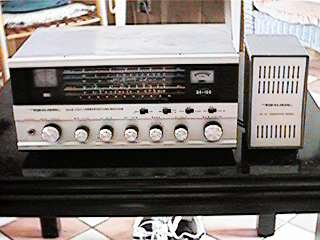|
|
|
|
First off there is a ton of information out there about all facets of shortwave radio and this server only allows so much webspace so if any ideas are thought of please email me to suggest them!!
Sorry to be the bearer of bad news but that wasn't my decision folks.
However the IRC #swl chatroom is still up and running on any StarChat server.Also look for #ODXA which is run by the Ontario DX Association as well. Look below for links on the IRC thingy and how you can join us.
Now in 2017, the solar cycle is about at rock bottom and as a result not many dx targets are audible..However South Americans are audible still on 60 meter band and the 31 meter band at night up until around 0500..sometimes later. The Pacific area is audible at times in early morning and late at night..African stations are hard to hear now but can be heard in late afternoon.
With that out of the way take a look through the page I put together here for some more pics and links to some of the sites I have found over the past few months.
The RadioShack twin known as the Realistic DX440 is also still found although the differences are that the DX440 hasn't got the recorder din plug jack and also did not come with ac adapter or antenna adapter.. However this is the finest radio I have ever found for the $100 range and the performance can't be beat in this price class of portables.. I have heard stations from all over the globe from the powerhouse BBC to RTM Sarawak from Malaysia on the tropical bands using just a 21 ft vertical in the trees.

|
